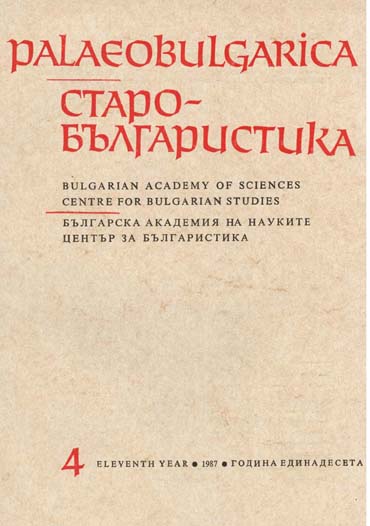
We kindly inform you that, as long as the subject affiliation of our 300.000+ articles is in progress, you might get unsufficient or no results on your third level or second level search. In this case, please broaden your search criteria.

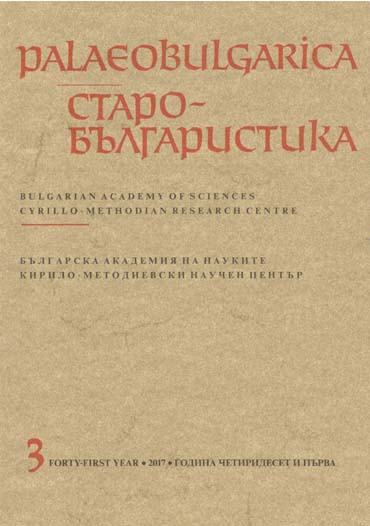
In 2011 a new Glagolitic fragment came to the fore at St. Catherine’s monastery. It was recently published by N. Glibetić (2015). The manuscript consists of one single, badly damaged folio. Comparing it with Greek and Slavic counterparts, Glibetić found out that its text probably derives from a časoslov written in the Sinai. During the preparation of her study we discussed the age of the fragment and the possible origin of its scribe. On the basis of paleographic and linguistic data we reached the conclusion that it very likely belongs to the first half, if not first quarter, of the 11th century and can either be attributed to the Northwest of the Macedonian region or, rather, an adjacent area further north. In this article these assumptions are verified by comparing the graphemic evidence of the fragment. In Miklas, Hürner 2015 it could be shown that Old Bulgarian documents can be dated and localized by a numerical calculation of their graphemic features. The method works well if the source material is sufficient to calculate at least ten out of twenty features. In this document we can trace ten with confidence; two others are not fully reliable due to a lack of text. In two cases we have to complement the list of subfeatures because the relevant graph ö occurs for the first time in practical use (three times in the endings of поö and [айЌль]скоö), while Ik (Ý) had not been registered in the relevant ‘Jesu(s)’-position ([и]сŤÝ хŤ[е]) before. Not to be counted is Dzělo because it occurs only as a numerical figure, nor Ik as an independent /u/-representative, since here it only replaces Ypsilon in the mentioned ending. Two counts result in the following data: Calculation 1 gives ca. 983 – 1006 (closest to the Rila fragments), and the redactional area Bc – Bd (a border-value closest to the Cod. Marianus). Calculation 2 gives the years ca. 1006 – 1007 (closest to Cod. Clozianus), and the redactional area Bc. The second calculation appears to be more plausible, although the first cannot be entirely ruled out. The redactional results are supported by Western features. Consequently, the text of the manuscript was most likely written in the first decade of the 11th century, and its scribe (a second, younger hand can be observed in a short correction on the verso-side) represents a school from the west of the Zeta-Hum area, in those days still primarily Serbian dominated Duklja, Travunja and Zahumlje.
More...
The present article attempts to attribute the Slavonic translation of the Sermon on the Beheading of St. John the Baptist. On the basis of an analisys of the textological, grammatical and lexical characteristics of the text of the four main copies, comparing them to the Greek text, the conclusion is reached that the translation is Old Bulgarian, pre-Preslav and most probably the work of a disciple of Methodius and that it can be dated to the end of the 9th or the beginning of the 10th century.
More...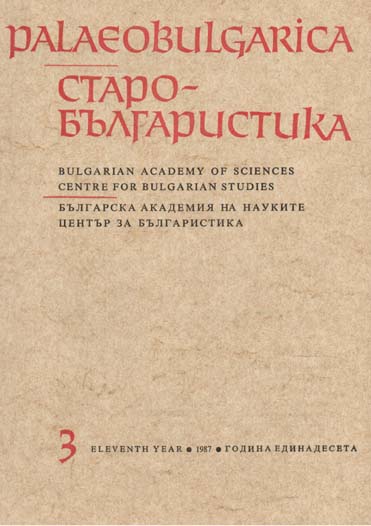



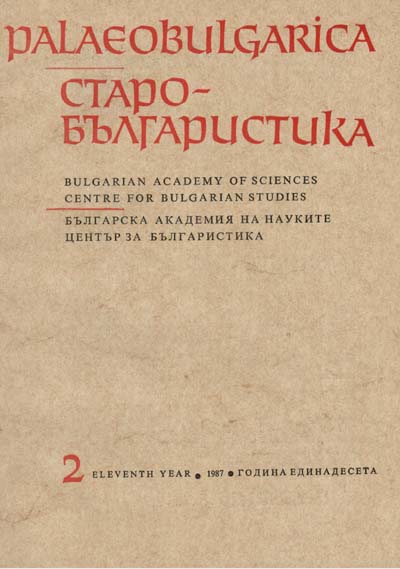

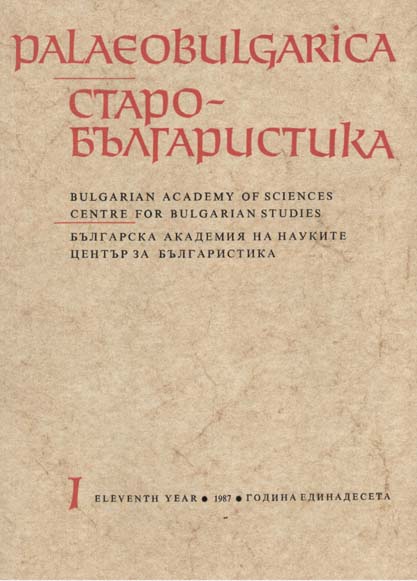







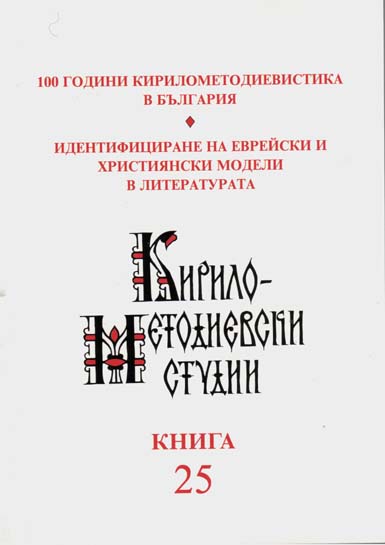
The article comments on a sour subject in the Bulgarian cultural discourse – the theoretical possibility of the substitution of the millenary old Bulgarian script – the Cyrillic to be replaced by the Latin transliteration. The question arouses at the beginning of the new century when Bulgaria was going to become a member of EU. A prominent researcher in the field of Bulgarian studies, the Austrian professor Otto Kronsteiner promoted the idea, attracting the attention even of some Bulgarian authorities. The author juxtaposes opposing views on the issue and their media, stressing that the Latin transliteration even be permissible in some levels of communication, in no case may have to be a substitute for the Bulgarian alphabet.
More...
In the article the author deals with the history of studies of the phenomenon of calques creation in Old Slavonic (literary Old Bulgarian). The accepted classification of Old Slavonic calques is based on the method of comparision between the word of the source language and the word of the target language. The author does not consider this classification to be suitable for the Old Slavonic calques and proposes to investigate the processes of calquing in the Old Slavonic language in the context of word-formation. The word-formative procedure of creation of one-root derivate was principally distinguished from the procedure of creation of compositum with two autosemantic root morphemes. One-root derivates were mainly created by medieval Slavic bookmen independently from the Greek samples.
More...
The publication summarizes the achievements of Bulgarian scientists in the field of Bulgarian historical lexicography in the 20th and 21st C. with a view to its importance for the reflection of the Cyrillo-Methodian tradition, preserved in the development of the language. Common and private lexicographical works have been considered here, describing the vocabulary of: Old Bulgarian classical corpus; Old Bulgarian manuscripts, preserved in the later copies (of the biblical texts, of the language of individual writers from Preslav- and Ohrid literary center, from unattributable monuments); Middle-Bulgarian monuments; some Bulgarian Damascenes; Church Slavonic language. Attention is paid to the contribution of Bulgarian scientists to the composing of specific lexicographical tools (reverse dictionaries and leader boards), as well as to the field of lexicographical theory and criticism. Future developments have also been outlined.
More...